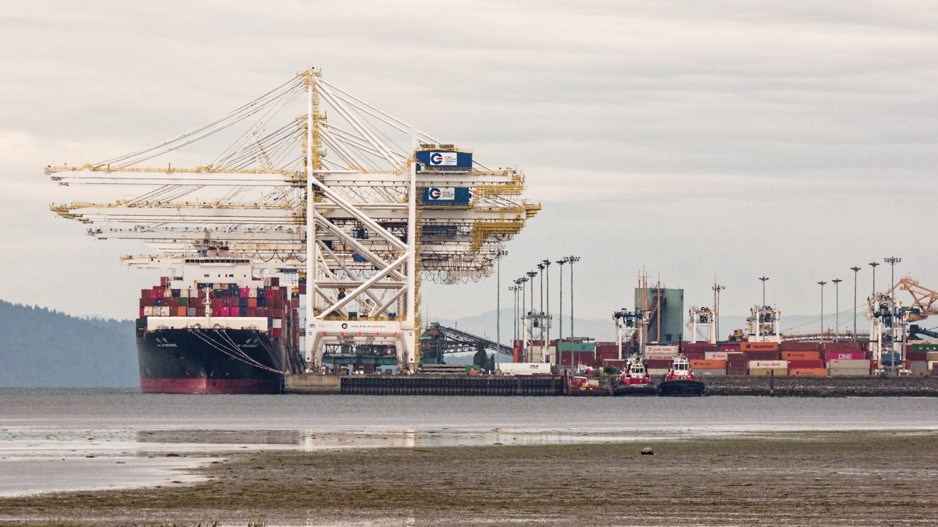The federal government is expected to soon render a crucial decision on a proposed new container terminal at the Port of Vancouver.
Ottawa has told the Vancouver Fraser Port Authority it has all the information required to decide on the environmental permitting for the proposed Roberts Bank Terminal 2 (RBT2) project.
“We would hope to hear about that decision in the coming months,” said Katherine Bamford, director of customer engagement with the port.
The project would be the port’s fifth container terminal and would increase its container export capacity by more than 30 per cent.
The more than $2-billion project is expected to add $3 billion to Canada’s annual gross domestic product once in operation.
The three-berth terminal would be in Delta, B.C., in deep, subtidal waters and would be unconstrained by bridges.
“You would be able to handle the largest container vessels that would call on Canada,” she said.
Half of Canada’s lentils, one-quarter of its peas and all its special crops move to overseas markets in containers, said Greg Northey, vice-president of corporate affairs with Pulse Canada.
“Whole businesses are built on being able to ship containers,” he said.
So, the possibility of adding a new terminal at the port is “extremely positive” for the pulse and special crops industry.
The existing four container terminals at the Port of Vancouver are operated by Global Container Terminals Canada Ltd. Partnership and DP World.
Northey hopes there is a new operator for the proposed RBT2 terminal.
“More competition is better, whether it’s the railways, whether it’s the shipping lines, or whether it’s the container terminals,” he said.
He thinks a new “world class” terminal would lure business to Canada.
“We have to make sure we’re as attractive as possible globally,” said Northey.
However, he hopes the port builds all the necessary infrastructure and makes changes to trucking and other regulations to properly service the new facility. The last thing the port needs is more traffic bottlenecks.
“We have already seen the port at the breaking point,” said Northey.
The Canadian Pacific Railway and Kansas City Southern Railway merger is likely to result in even more traffic heading to the already stressed port.
“You’re already hitting a lot of potential functional limits on just how much traffic you can move through there,” he said.
Bamford said global container trade is growing at a clip of about five per cent per year. Canada’s West Coast is expected to run out of container capacity in the last half of this decade.
The environmental assessment process for the proposed terminal has taken a decade. If it is approved by a federally appointed independent review panel, the project will still require other types of permitting.
Then there will be the procurement and building process, which is expected to take another six years. The port would then solicit interest from a terminal operator.
Put it all together and it means the terminal could be operational by the early-2030s.
Most of the Canadian grain that moves through the port is handled in bulk, but a growing per centage is shipped by container.
The port handled 26.9 million tonnes of bulk grain and another 3.5 million tonnes of containerized grain in 2021. So, 11.5 per cent of the port’s total grain exports moved in the metal boxes.
Grain accounts for 30 per cent of total exported containerized tonnage at the port, with 37 per cent of that originating in Saskatchewan, 20 per cent from Alberta and nine per cent from Manitoba.
The port is still compiling its 2022 statistics, but grain volume is likely down about 25 per cent due to the drought, said Bamford.
Vancouver is an export-oriented port, with 80 per cent of the total volume of goods handled by the port being outbound and the remaining 20 per cent comprising imports.
China is the biggest grain customer for the port, followed by Japan and Bangladesh.




